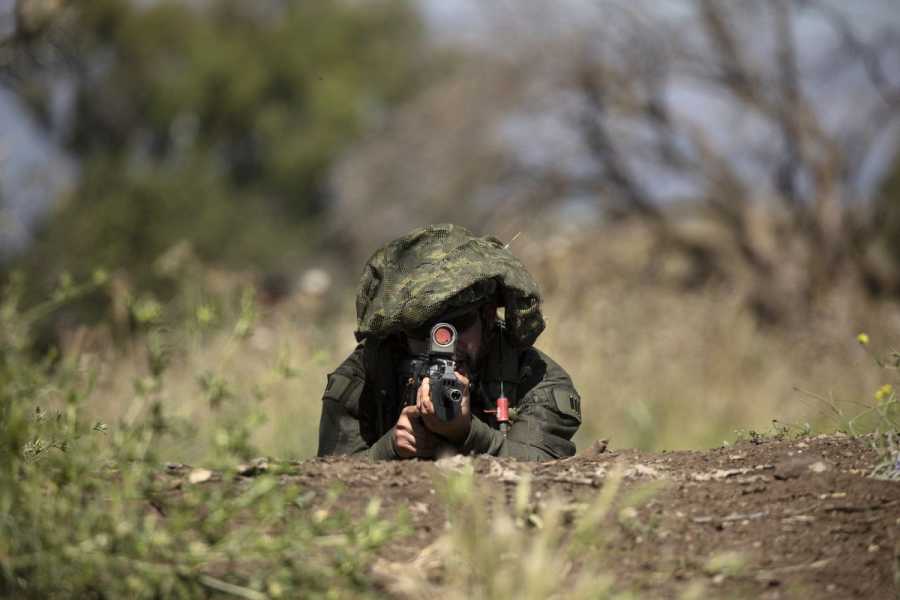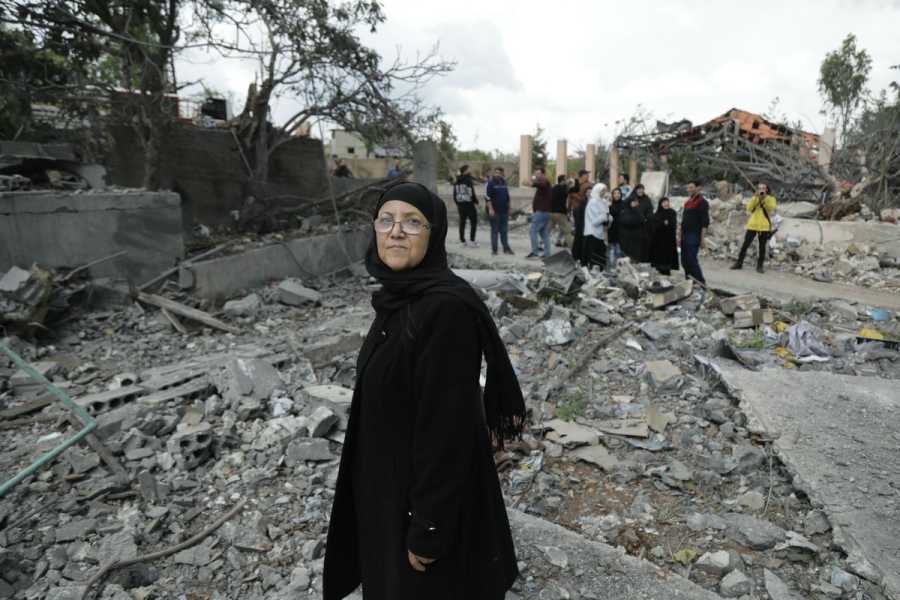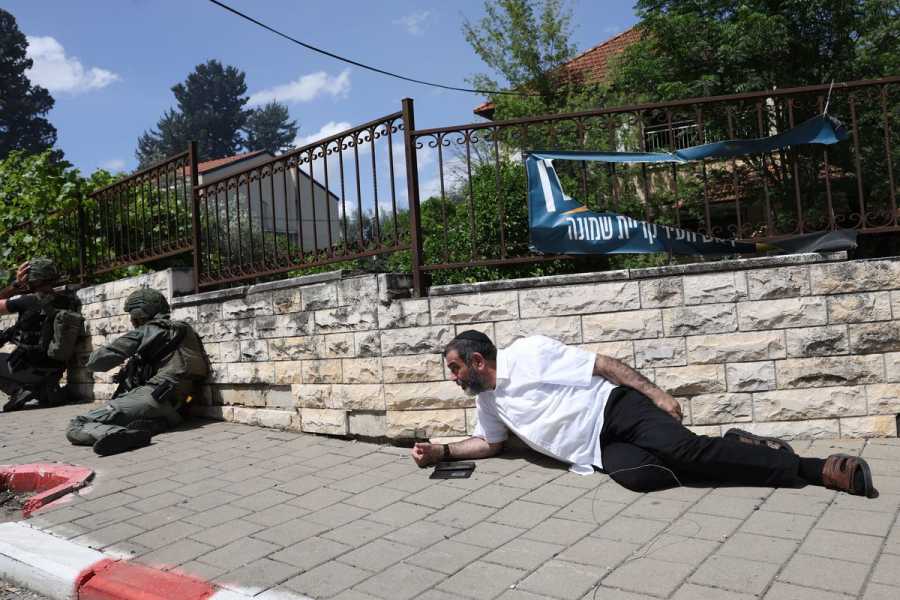Israel and Hezbollah are trying to keep their fighting contained. But the conflict keeps escalating.

An Israeli reserve combat soldier takes part in a training drill on May 8, 2024, in the Golan Heights. Amir Levy/Getty Images Joshua Keating is a senior correspondent at Vox covering foreign policy and world news with a focus on the future of international conflict. He is the author of the 2018 book, Invisible Countries: Journeys to the Edge of Nationhood, an exploration of border conflicts, unrecognized countries, and changes to the world map.
If not for the ongoing carnage in Gaza, there’s a good chance the spiral of violence between Israel and the Lebanon-based military group Hezbollah would be the Middle Eastern conflict dominating the world’s attention right now. In the weeks leading up to the current Israeli offensive in Rafah, there was often more actual fighting happening on Israel’s northern border with Lebanon than in the south in Gaza.
The fighting has been happening since the day after Hamas’s October 7 attacks, when Hezbollah launched guided rocket strikes against Israel in what it called “solidarity with the victorious Palestinian resistance.” Hezbollah has continually fired rockets and drones into Israel and in return, the Israeli military has launched air and military strikes against the group’s bases in Lebanon in response. Hamas and Hezbollah are both Iran-backed, anti-Israel militant groups, though they differ significantly in ideology and operational approach.
In the first six months of the fighting, there were at least 4,400 combined strikes from both sides, according to the US-based Center for Strategic and International Studies (CSIS). An estimated 250 Hezbollah members and 75 Lebanese civilians have been killed in the fighting, along with 20 Israelis — both civilians and soldiers. More than 60,000 residents of northern Israel have been displaced by the attacks, along with some 90,000 people in southern Lebanon.
Those numbers may pale against the far larger death toll and refugee crisis caused by the fighting in Gaza, but the situation in the north could have been — and may yet be — far worse than it has been, given the military strength on both sides. The Israeli military is, for its size, one of the most powerful in the world, while Hezbollah is the best-armed non-state group in the world, with an arsenal of between 120,000 and 200,000 rockets and missiles and up to 30,000 active personnel and 20,000 reserves, according to CSIS estimates. If it wanted to, Hezbollah could cause far more damage on Israel than Hamas — which for comparison, had around 30,000 rockets before October 7 — ever could.
While both sides have seemed to be trying to avoid escalating the fighting into a full-scale war as devastating as the one they fought in 2006, that doesn’t mean such a war won’t happen anyway. After the latest series of Israeli Defense Forces (IDF) airstrikes in Lebanon, in response to Hezbollah drone attacks on May 6 that killed two IDF soldiers, Defense Minister Yoav Gallant predicted a “hot summer” on the border.
Considering that both sides supposedly don’t want escalation, they don’t appear to be doing anything to de-escalate. Which raises the question: How long can this very violent conflict stay under control? And what will it take to stop it from spilling over into something worse?
Hezbollah and its evolution, briefly explained
On November 3, 2023, nearly a month after the war began, Hassan Nasrallah, the cleric who has led Hezbollah since the early 1990s, finally addressed the conflict publicly. Amid widespread speculation that the group was about to escalate its involvement in the conflict — a worrying possibility, given Hezbollah’s military strength — Nasrallah told supporters, “Some claim that we are about to engage in the war. I’m telling you we have been engaged in this battle since October the 8th.”
In other words, the group would continue doing what it had already been doing up until that point: keeping the pressure on Israel and forcing it to divert resources — according to some media reports, the IDF has more troops on the Lebanese border than in Gaza — while minimizing its own exposure to risk.
Part of the challenge of understanding Hezbollah and what it may do comes from the group’s unique structure. Hezbollah is a hybrid organization that simultaneously acts as a military group fighting Israel, a proxy group acting on Iran’s behalf, a political party within Lebanon, and the de facto governing authority in parts of the country.
Its origins date back to the early 1980s, when Israeli troops invaded and occupied part of southern Lebanon in an attempt to drive the Palestine Liberation Organization, then based there, out of the country. With the backing of Iran’s Revolutionary Guards, a group of Lebanese Shiite Muslims took up arms against the Israeli occupation, eventually taking the name Hezbollah, which means “Party of God.”
Hezbollah became known globally for a series of dramatic terrorist attacks, including the bombings of the US embassy and Marine Corps barracks in Beirut in 1983 (the latter of which killed 241 US military personnel), the bombing of a Jewish Community Center in Argentina in 1994, and the 2005 assassination of Lebanese Prime Minister Rafik Hariri.
Israel eventually withdrew its troops from Lebanon in 2000, but that didn’t end the conflict. In 2006, Hezbollah abducted two Israeli soldiers, sparking a two-month war during which Israeli troops invaded southern Lebanon and Hezbollah fired thousands of rockets at Israel. Including both combatants and civilians, more than 1,100 Lebanese and more than 160 Israelis were killed in the war, which ended in a stalemate, though both sides claimed victory.
Hezbollah was also heavily involved in the Syrian civil war, which began in 2011, fighting on behalf of Syrian President Bashar al-Assad’s Iran-backed regime. It still has a significant military presence in Syria, which has periodically been targeted by Israeli airstrikes in recent years.
That experience in Syria, according to many experts, transformed the group’s identity and is necessary to understanding its approach to the current war. Today, it’s a regional power player as much as a resistance movement.
“Hezbollah’s mission has completely changed since 2006,” said Hanin Ghaddar, senior fellow at the Washington Institute for Near East Policy and author of a recent book on the group. “In 2006, the mission was to fight Israel. However, their mission shifted when they went into Syria. Today their mission is to act as an insurance policy and a protective shield for Iran. Their job is actually to protect Iran’s interests, not to fight Israel.”
In this respect, it differs from Hamas, which has also received weapons and funding from Iran but acts far more independently. (As it demonstrated in the October 7 attacks, which were likely undertaken without the explicit blessing of its Iranian sponsor.) Hamas is also a Sunni group, as opposed to Shiite Hezbollah, which put the two groups on opposite sides of the Syrian civil war, with Hamas backing the anti-Assad rebels.
In recent years, however, they’ve patched things up, even reportedly maintaining a joint operations center in Lebanon during the last round of fighting in Gaza in 2021. But in contrast to Hamas, Hezbollah has been much more wary about direct confrontation with Israel.
“They don’t see themselves with huge tank columns rolling into Galilee [in Northern Israel] toward Jerusalem,” Heiko Wimmen, a Lebanon-based analyst for the International Crisis Group, told Vox. “What they want is to build coalitions that constrain Israel’s actions and suffocate them, slowing building toward Israel collapsing from its own internal contradictions.”
If nothing else, this approach has spared southern Lebanon the type of scenes now unfolding in Gaza. But recent events across the border have made that kind of slow approach harder to sustain.
Why the fighting has escalated
Israeli strikes since October 7 have killed some of Hezbollah’s most senior commanders — though Israel’s claims to have killed “half” of its commanders may be somewhat exaggerated. The early April strike on the Iranian consulate in Damascus killed Mohammad Reza Zahedi, the Iranian general who was believed to be the group’s principal liaison with Iran and sat on its governing council.
Even as it has sought to avoid a repeat of 2006, Hezbollah has already lost roughly the same number of fighters that were killed during that conflict, to say nothing of the humanitarian crisis faced by the tens of thousands of Lebanese civilians in the south forced from their homes by the fighting.

Residents of the southern Lebanese village of Aita al-Shaab walk past debris caused by Israeli strikes on April 9, 2024. Hasan Fneich/AFP via Getty Images
Considering the impact on its own strength and the areas it governs, the war so far has in many ways been the worst of both worlds for Hezbollah. “What they’re doing is just bringing damage to Lebanon without actually affecting anything in Israel,” said Ghaddar.
Hezbollah might therefore hope to climb down off the escalation ladder and keep its powder dry for the next confrontation with Israel. Hezbollah officials have said they will likely stop their strikes against Israel if Hamas agrees to a ceasefire, unless Israel continues its strikes into Lebanon. Until then, it’s likely locked into the current cycle — unable to unilaterally stop its strikes without losing credibility with both its supporters and its Iranian patrons, but desperate to avoid incurring even greater losses.
“Hezbollah has climbed a pretty high tree by committing themselves to fighting as long as the war in Gaza has not ended,” said Wimmen.
Israel’s calculations
In the days after the October 7 attacks, Israeli leaders received intelligence — false, as it turned out — that Hezbollah fighters were planning to cross the border into Israel in a multi-pronged attack. President Joe Biden reportedly had to talk Prime Minister Benjamin Netanyahu out of an all-out preemptive attack against the group inside Lebanon.
Still, some senior officials, notably Defense Minister Gallant, have continued to push for more aggressive action against Hezbollah, which — notwithstanding the shocking events of October 7 — poses a much more serious military threat to Israel than Hamas ever did. Pressure on the Israeli government is growing from the tens of thousands of residents of northern Israel who remain displaced from their homes because of continual rocket attacks, forcing them to live with family, with friends, or in hotels. Even if the fighting were to stop, many say the fear of an October 7-style attack coming over the border would keep them from returning home.
“We have two schools of thought on the issue in the security establishment here,” Nimrod Novik, a former foreign policy adviser to Prime Minister Shimon Peres, now with the Israel Policy Forum, told Vox. “There’s one that from day one [after October 7] wanted to prioritize Lebanon given that the threat is far more serious than Hamas. Then there’s the other school that argues you’ve got to finish the job in Gaza, whatever that means.”
Gallant has suggested that Israel could increase its strikes against Hezbollah during a Gaza ceasefire. He has said that Israeli strikes will continue, ceasefire or no, until Hezbollah pulls its forces back from the border.

People take cover near the site of a rocket attack from Lebanon, in Kiryat Shmona, northern Israel, May 5, 2024. David Cohen/JINI via Xinhua
That’s a scenario that the US desperately wants to avoid. A wider regional war could potentially draw in US forces, and Washington has made avoiding one a priority since October. This has included military steps to deter Hezbollah like dispatching Navy ships to the Eastern Mediterranean as well as diplomatic efforts to end the fighting between the two sides led by Special Envoy Amos Hochstein.
But that hasn’t dispelled the threat: In late February, CNN reported that US officials were increasingly concerned that the IDF could launch a ground incursion into Lebanon. Novik told Vox he is worried that the “Israeli home front is not prepared for the kind of damage that Hezbollah can inflict” on Israel, given Hezbollah’s military capabilities, which are much more formidable than those of Hamas.
The northern threat is likely also weighing on Israeli leaders’ minds in the wake of this week’s announcement from the White House that the US is pausing some weapons shipments to Israel due to concerns about its offensive in Rafah. Israeli officials have reacted to the announcement with defiance, with Netanyahu saying the country is prepared to “stand alone” if it has to.
On Gaza, at least, Netanyahu could be right: Israel might have enough weapons in its own stocks and from other countries to continue the fight in the south. But if it has to wage a second war as well, its resources might become far more stretched.
The best hope for peace is that both Israel and Hezbollah still have strong individual incentives to avoid a larger conflict. “Both sides know that an all-out war would be extremely destructive, quite possibly even more destructive than the previous war in 2006, and with very little plausible gain,” said Wimmen.
But wars are not always started by rational calculation. Novik said it was still very possible that, despite both sides’ best efforts, “a missile that hits the wrong target and creates the number of casualties that the other side finds unacceptable could bring us into conflagration.”
The longer the wars on both fronts drag on, the more likely that becomes.
Sourse: vox.com